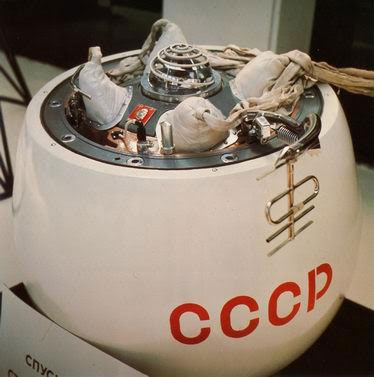A Soviet spacecraft from the 70s is about to fall to Earth.
An object from the past is set to visit Earth next week. It is the Soviet spacecraft Kosmos 482, launched in 1972. Kosmos 482 is set to make an uncontrolled re-entry into the atmosphere around May 10. The spacecraft was originally designed to land on Venus, but a launch failure left it stuck in Earth orbit for more than 50 years.
Low risk but not to be missed
Astronomers have confirmed that Kosmos 482 will hit Earth next week, but the exact time and location are still unclear. Much of the debris may burn up in the atmosphere, but some of the high-temperature titanium structures designed for the Venusian atmosphere may survive. Earth orbit expert Jonathan McDowell said: " This half-ton, 1-meter-diameter titanium sphere could hit the ground. The odds of hitting a person are about one in a few thousand. It doesn't contain nuclear material, but we certainly don't want it hitting someone's head! At nearly 500kg and 1 meter in size, the danger is equivalent to a small meteorite impact ."

Uncontrolled re-entry of spacecraft into the atmosphere poses a number of risks, from destroying structures to causing injuries (though these are extremely rare). Space debris has previously landed in people's yards in Poland, crashed into buildings in Florida, and even caused 'metal rain' in the Ivory Coast. The US has criticized China for allowing its Long March rocket stage to fall freely, stressing the importance of controlling space debris and sharing orbital data.
Unlike other accidents that were caused by carelessness, Kosmos 482 was the product of a technical failure. The mission failed, leaving it a 'wreckless' orbiting Earth instead of fulfilling its original goal of exploring Venus. The incident is a reminder of the increasingly urgent problem of space debris management, which requires global cooperation to keep Earth safe.
You should read it
- The first spacecraft to fly by the Moon - Earth
- NASA's spacecraft soared to the asteroid that could destroy the Earth for specimens
- 23 billion km away from Earth, how the spacecraft communicates with us
- Traveling interstellar, the Voyager 1 spacecraft sent back to Earth strange sounds
- SpaceX's Crew Dragon spacecraft successfully assembled with the ISS station, completely automated
- How fast can a rocket fly to win gravity and escape the Earth?
 World's smallest pacemaker launched: Smaller than a grain of rice, powered by light energy, self-destructs after use
World's smallest pacemaker launched: Smaller than a grain of rice, powered by light energy, self-destructs after use Revolutionary rocket to take humans to Mars
Revolutionary rocket to take humans to Mars China develops new method to produce 98% oxygen from CO2
China develops new method to produce 98% oxygen from CO2 The first baby born through AI-assisted conception
The first baby born through AI-assisted conception Gravity Anomaly in Antarctica: Extraterrestrial Super Object Revealed
Gravity Anomaly in Antarctica: Extraterrestrial Super Object Revealed A planet was just swallowed before the eyes of Earthlings
A planet was just swallowed before the eyes of Earthlings